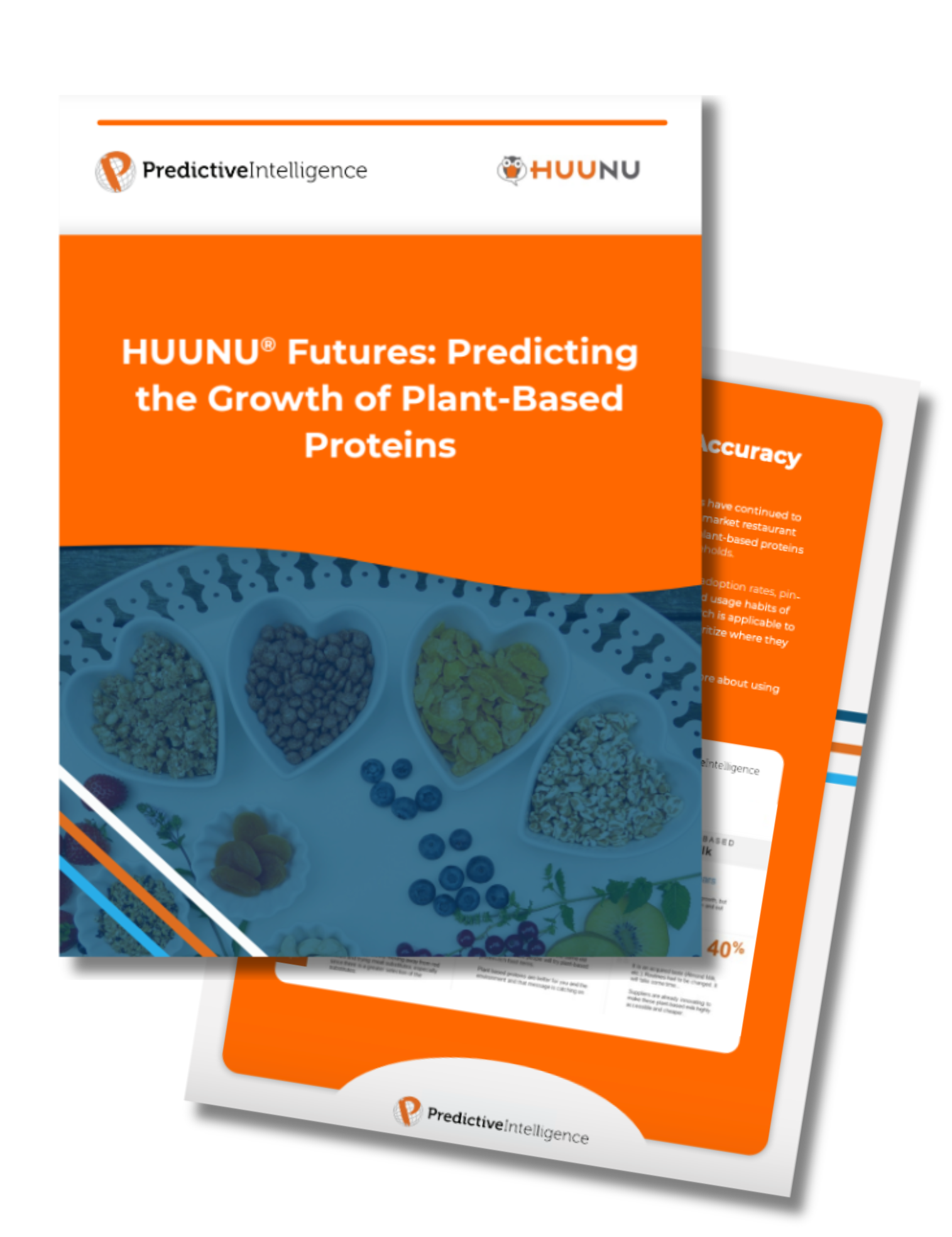3 types of predictive market research methods
Predictive market research tools can vary, but no matter the mechanism, the objective remains the same – to deliver a prediction of the future with the highest degree of accuracy possible. Here are three examples of predictive market research methods that are consistently getting this right:
HUUNU Foresight
HUUNU Foresight is a predictive research method that utilizes a prediction market methodology for applications like agile market optimization and the screening of early-stage ideas. The HUUNU platform collects a combination of qualitative and quantitative data from a prediction market, deploying a behavior-based algorithm to calculate likelihood of success. This predictive methodology is superior to traditional methodologies as it often surfaces disruptive or niche ideas that don’t tend to score well in more traditional surveys, but which could result in breakthrough success in-market.
HUUNU Futures
HUUNU Futures is a predictive research future casting methodology designed to predict the size, scope, and timing of future trends and consumer behavior. This predictive research method allows decision-makers to predict things like:
Trend timing, including when a trend will reach critical mass
Trends and jobs, including out-year needs and demand penetration
Brand growth, including emerging or mature growth trajectories
Consumer behavior, including the magnitude and timing of future behavior
Again, this predictive research methodology uses a prediction market to collect both qualitative and quantitative data to predict not only what is going to happen, but WHY.
Predictive surveys
Predictive surveys are a predictive research approach that does not necessarily involve the deployment of a prediction market, but rather predictively-worded surveys designed to extract a combination of qualitative and quantitative data for maximum result accuracy. Participants are provided with topical knowledge and context, then asked to make their best predictions about how they think consumers will react to a product, idea or message. The predictive research design involved in predictive surveys works to minimize over-claim and rational response bias for more accurate results.
What’s the difference between qualitative and quantitative research?
Qualitative research collects non-numerical data such as participants’ observations and thoughts and uses this data to reveal motivations, behaviors, and drivers. In predictive market research, this data is collected when participants are asked to give a rationale for the bets they place.
Quantitative research collects numeric data which is analyzed. This data is structured and is used to quantify preferences and choices, translating numeric data into scaleable insights. In a prediction market, probability scores (e.g., 0-100% certainty) are used to interpret results.
Leverage innovative predictive market research methods at CRG for richer insights
If you’re looking to leverage the extensive benefits of innovative predictive market research design, choose CRG. CRG’s predictive research services have a proven 90% in-market accuracy, three years out and beyond. For over a decade, we’ve been helping insights professionals and marketers optimize their decision-making for unprecedented strategic advantage.







